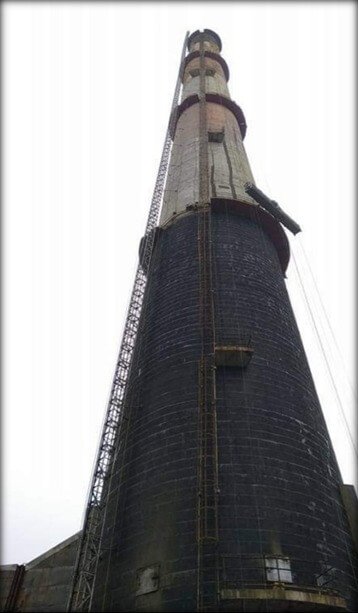Beams made of concrete are essential to structural integrity. However, these beams may deteriorate as a result of aging, exposure to the climate, overloading, and seismic activity. This creates safety hazards and erodes the structure as a whole.
Carbon wrapping for beams has emerged as one of the most efficient solutions for structural strengthening. Utilizing Carbon Fiber Reinforced Polymer (CFRP) sheets, this modern technique enhances the beam’s capacity without adding excessive weight or volume.

What is Carbon Wrapping for Beams?
Applying high-strength carbon fiber sheets or strips to beam surfaces with specialized epoxy resins is known as carbon wrapping. The flexural and shear strengths of the beam are increased by these CFRP materials’ bonding with the concrete base.
- It works especially well for architectures that:
- Have sustained harm
- Upgrades in load are necessary.
Are found in hostile settings (coastal and marine, chemical factories, etc.).
Benefits of Carbon Wrapping for Beams
High Strength-to-Weight Ratio
CFRP is substantially lighter and stronger than steel under tension. This implies that beam reinforcement is possible without increasing the structure’s dead load.
Corrosion Resistance
Carbon fibers are ideal for settings exposed to chemicals, dampness, or salty air since they do not corrode as steel does.
Quick Installation
Heavy equipment is not needed, and installation is quick and dust-free. For live structures, this reduces labour time and on-site disturbance.
Minimal Aesthetic Impact
Because of its thin profile, CFRP is perfect for interior spaces like shopping centres, medical facilities, or business buildings where aesthetics and space are important considerations.
Long Lifespan
Carbon wrapping has a lifespan of more than 20 years when applied and stored properly, guaranteeing long-term safety and financial benefits.
Step-by-Step Carbon Wrapping Process
To guarantee bonding, strength, and performance, the carbon wrapping technique requires a number of procedures that only skilled experts can complete.
1. Inspection and Design
Structural engineers examine the current beam for
- Cracks
- Load calculations
- Delamination or spalling
Based on the structural requirements, they choose the CFRP grade and orientation.
2. Surface Preparation
The surface of the beam is prepped and cleaned by:
- Removing dust, grease, and loose concrete
- Grinding to a smooth finish
- Fixing structural defects with epoxy mortar
3. Primer Application
To improve adhesion and seal surface microspores, an epoxy primer is used.
4. Resin Coating
Technicians brush or roll bonding resin onto the prepped region, which serves as the adhesive for the CFRP
5. Fiber Wrapping
According to the design, carbon fiber sheets are cut and positioned in particular directions, typically in the beam’s flexural zones. To eliminate air bubbles and provide a strong binding, they are uniformly pressed.
6. Curing
According to the design, carbon fiber sheets are cut and positioned in particular directions, typically in the beam’s flexural zones. To eliminate air bubbles and provide a strong binding, they are uniformly pressed.
7. Final Inspection
Inspectors examine the finished product for voids, delamination, or bubbles to ensure a high-quality installation
Applications of Carbon Wrapping for Beams
Applications for carbon wrapping are numerous and span numerous sectors. Let’s examine this more closely:
1. Commercial Buildings
The best way to reinforce beams is with carbon wrapping in:
- Office buildings
- Malls
- Metro stations and airports
It provides the least amount of disruption when retrofitting.
2. Industrial Facilities
Dynamic loading is common in warehouses and factories. CFRP wrapping maintains structural integrity without interfering with continuing business as usual.
4. Infrastructure & Bridges
Beams in flyovers and bridges frequently experience fatigue from repetitive vehicle loads. Carbon covering prolongs service life and improves fatigue resistance.
5. Hospitals and Institutions
Carbon wrapping is a quick-curing, low-noise strengthening technique for situations where downtime is crucial.

Data/Graphs: Comparison with Traditional Methods
| Feature | Carbon Wrapping | Steel Jacketing | Concrete Jacketing |
| Weight Addition | Very Low | High | High |
| Corrosion Resistance | Excellent | Poor | Moderate |
| Time for Installation | Fast | Slow | Moderate |
| Structural Efficiency | High | Moderate | Low |
| Aesthetic Impact | Low | High | High |
| Lifespan | 20+ Years | 10–15 Years | 10–15 Years |
For buildings that are exhibiting symptoms of distress or need strength enhancements, carbon wrapping for beams is an affordable, quick, and long-lasting solution. Engineers and developers from a variety of industries now use it because of its advantages, which include a high strength-to-weight ratio, resistance to corrosion, and aesthetic compatibility.
CFRP beam wrapping can be the best investment you make for structural safety if you’re thinking about upgrading or reinforcing your structure. Contact us

